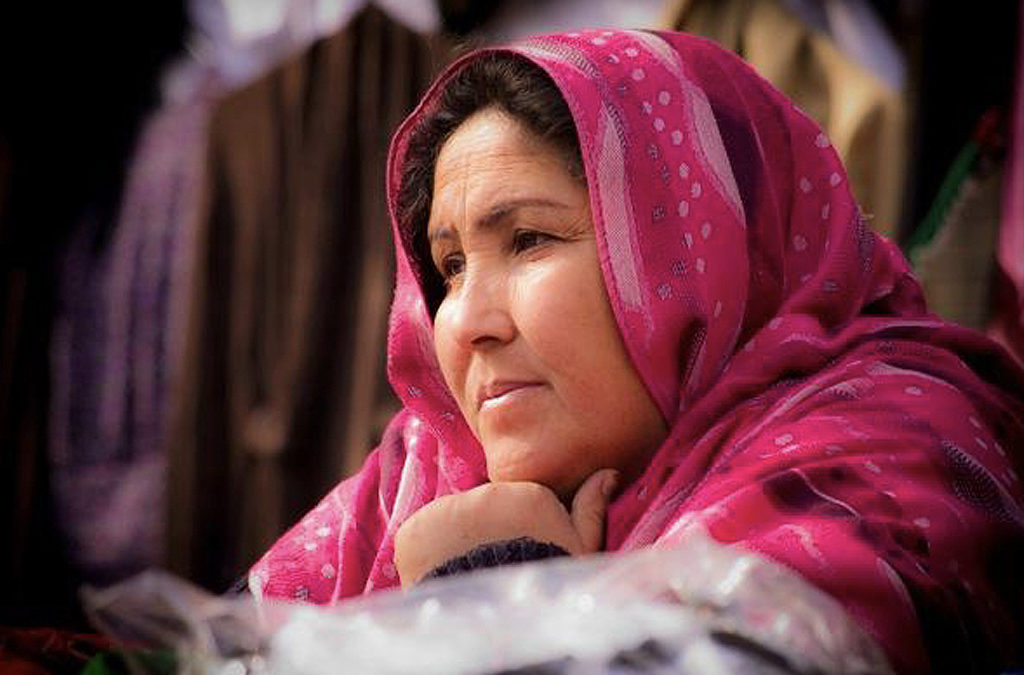David Cortright and Kristen Wall
The U.S. is set to withdraw the bulk of its forces from Afghanistan by 2014. This transition period is fraught with risk for Afghan women, many of whom have benefited during 10 years of improved access to education, health care, and political participation.
International aid programs have funded schools, trained health care workers, and supported development projects. There are now more than 3 million girls in school and 50,000 female teachers. Infant and maternal mortality rates have dropped significantly.
Life expectancy has risen, and hundreds of thousands of women participate in local development decision-making councils. The Afghan Constitution includes a gender equality clause and guarantees a 25 percent quota of women — one of the highest in the world — in the lower house of Parliament.
PROTECTING PROGRESS
While important, these gains are fragile and incomplete. Misogynistic norms are still widespread in Afghanistan, endangering women in their own homes and obstructing women’s participation in political and economic life. A 2008 nationwide survey found that 87 percent of respondents had experienced violence from forced marriage, honor crimes, sexual or physical abuse, or rape. Girls have been attacked for attending school, and women in public service are subject to threats and intimidation.
Civil war in Afghanistan would drastically undermine women’s gains in education, political inclusion, and physical safety.
Future political instability threatens to reverse fledgling progress for women. Renewed civil war or greater territorial gains by the Taliban after 2014 would drastically undermine gains in women’s education and political inclusion and further endanger their physical safety.
A negotiated settlement between the Taliban and Karzai government is needed to achieve durable peace and bring stability to Afghanistan, but it must not come at the expense of women’s rights. Constitutional provisions for women’s equality and political representation in Parliament must be preserved in any negotiations with the Taliban. Women and girls’ rights to education and freedom of movement must also be protected.
FOUNDATION FOR DEVELOPMENT
Women’s rights are not secondary to Afghanistan’s security and development. The Center for Global Development finds a “near-perfect convergence” between improving adolescent girls’ health and securing economic and social development.[1] The Organisation for Economic Co-Operation and Development finds that women usually invest more of their earnings in their families and communities than men.[2] Women’s political representation is strongly correlated with lower levels of violence in societies.[3] Afghan women’s rights are a critical foundation for the future development and stability of Afghanistan.
The creation of stable peace hinges on the full involvement and participation of women in Afghanistan.
The international community can help preserve and build upon the last decade by prioritizing the meaningful inclusion and representation of Afghan women in political negotiations. As reflected in UN Security Council Resolutions 1325 and 1889, the creation of stable peace hinges on the full involvement and participation of women. The reconstruction and healing of society should not be entrusted solely to former combatants and warring parties, with women ostracized and excluded. The active involvement of Afghan women in the peace process, the full recognition of their voices and priorities, and their enfranchisement in post-conflict life will be essential to building peace and preserving the human rights gains achieved since 2001.
GALVANIZING ATTENTION
Women activists and civil society groups have fought hard to be heard at conferences that have shaped the proposed peace process. Despite being initially ignored by the organizers of the London Conference for donors in January 2010, a group of Afghan women activists were able to gain entry at the last minute and galvanized significant media attention for women’s issues on the sidelines of the conference. They received a personal pledge of support from U.S. Secretary of State Hillary Clinton and an invitation to a reception at Buckingham Palace, where they distributed photocopied statements to world leaders and military chiefs.
Women must be meaningfully represented in all aspects of the peace and reconciliation process. Women’s participation will help to ensure that these efforts address the priorities of Afghan families and communities, not just those of political and militia leaders. Female participation should include not only those who are government officials and members of parliament but also leaders and activists of community groups.
INTERNATIONAL LEVERAGE
Because the Afghan government has shown repeated resistance to addressing the needs of women and including women in high-level decision making forums, international donors should tie funding for the Kabul regime to the meaningful involvement of women in high-level peace negotiation and reintegration bodies. The Afghan government is heavily dependent on foreign funds. It is requesting billions to fund its continuing operations. This gives international donors leverage, which should be used to ensure that women have a meaningful seat at the table in determining the country’s post-conflict development priorities.
David Cortright is director of policy studies at Notre Dame’s Kroc Institute for International Peace Studies. Kristen Wall is research associate for policy studies at the Kroc Institute. Download a copy of the new edition of their research report, Afghan Women Speak: Advancing Human Rights in Afghanistan. (40-page pdf)
[1] Temin M, and Levine R., Start with a Girl: A New Agenda for Global Health, (Washington, D.C.: Center for Global Development), 2009.
[2] OECD Development Assistance Committee, Investing in Women and Girls: The Breakthrough Strategy for Achieving the MDGs, 2010.
[3] Melander, Erik, “Political Gender Equality and State Human Rights Abuse,” Journal of Peace Research, 42 no. 2: 149-166.



